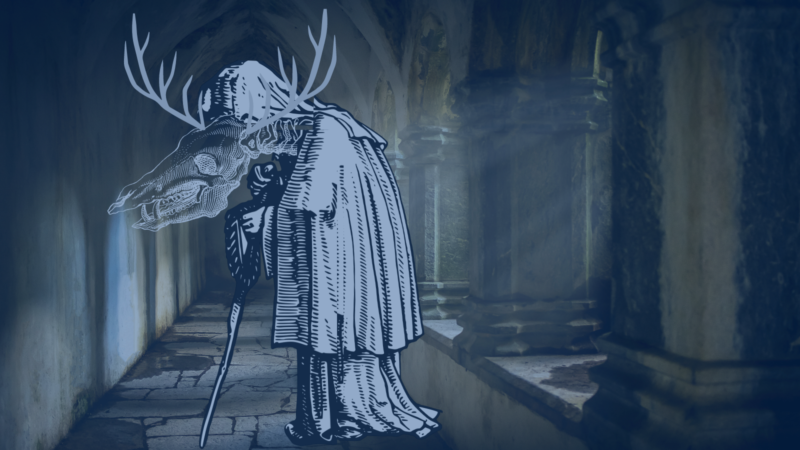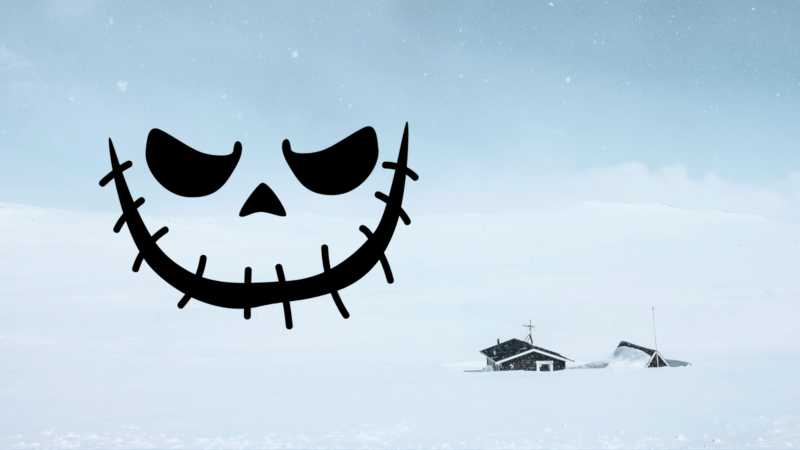Twelve Monsters of Christmas
Eve Volungeviciute

As we are nearing the end of yet another year, I thought what better time to have a look at what malevolent entities there are tied to the Christmas season. As one would expect, the list is quite long! Without further ado, let’s check out the horrors of the festive season, shall we?
Krampus
Referred to as the anti-Santa, Krampus looks like a devil or a wild Alpine beast, depending on the geographical region. It even has a celebration night, which is December 5th in Austria and some other parts of Europe. Krampus is used as an encouragement for children to behave or he’ll drag them down to hell – basically a cautionary fairytale. There is a modern twist on this as well, where countries celebrate with men dressing up as the creature and chasing kids through the streets. I don’t know about you but that definitely gives me motivation to get on Santa’s ‘nice’ list.
Belsnickel
A male character from southwestern German lore, Belsnickel comes to children before Christmas, dressed in ripped up old garments. He then uses a switch to frighten the children. Modern accounts clarify the switch is used purely for scare tactics and to remind children there is still time to be good before Christmas. If the children are polite, however, they get candy…so all is well, right?
Yule Cat
There are mean cats and then there are cats that are trying to eat you. This entity is connected to an Icelandic tradition where those who finished all their chores in time for the holidays would receive new clothes, while those who didn’t had to go without. Parents told their children tales of the Yule Cat, who was looking for lazy children and could tell by their lack of new clothing. These children would then be sacrificed to the cat (brutal much?). This is also a gentle push to help those in need, as Icelanders would often give clothes to the homeless in honour of this tradition.

Pere Fouettard
Part of a French legend, Pere Fouettard is a butcher who looked for children to eat (charming, am I right). He lured three boys into his shop where he would kill and salt them. Saint Nicholas came to the rescue and resurrected the boys. The butcher then became his slave of sorts, tasked with enacting punishment to bad children on St. Nicholas Day. Definitely one of the grimmer entries on this list.
Yule Lads
These thirteen Icelandic trolls known as Yule Lads each have a name and distinct personality. Similar to Yule Cat, they would scare children into behaving, while also wreaking general havoc around Christmas. From the twentieth-century onwards, tales surfaced of the benevolent figure Julenisse (Santa Claus) who brought gifts to good children, thus merging traditions until formerly mischievous Yule Lads left nice gifts in shoes that children would leave out. Considering they’ve been good, of course.
Le Befana/Babushka
The title depends on the region, Le Befana for Italy and Babushka for Russia and parts of Eastern Europe respectively (it’s also a thing in Lithuania). She’s a witch-like lady who gives out punishments for the lazy while rewarding the hard-working ones. She packs up and takes off on a broomstick every January to join the three kings. Every house is up for search and if she finds a child there, she leaves behind cookies and various presents.
Mari Lwyd
A Welsh creature, Mari Lwyd only has one goal in mind – to get inside your house. A skeletal being, she rises from the dead and roams the streets to remind the living of her existence. To keep the undead out, you must engage in a battle of wits in poetry form. This usually happens on New Year’s Eve. To add to the creepy visual, it’s usually presented by a puppeteer parading a horse skull on a pole draped in white cloth. Talk about the stuff of nightmares.

Perchta
In Switzerland, the goddess Perchta rides with a horde of demonic helpers known as Straggele, who enjoy tucking into the new year offerings left out by people who hoped for Perchta’s blessings of wealth and health. Straggele take punishing bad children to the extreme as they rob them and tear them to pieces, literally.
Lussi
December 13th in Norway and Sweden used to be known as Lussi’s Night. Lussi herself was a demonic woman accompanied by demons and evil spirits. During the old Winter Solstice, when the veil between the living and the dead was believed to be thinner, Lucy and her demons would fly over town and villages to check if the years’ work had been completed. If not, there would have been consequences.
The Kallikantzaroi
A group of malevolent goblins and demons from Greece who live underground. Legend says that the twelve days of Christmas would cause the demons to rise and roam the Earth. Their mission was to steal any children born throughout this time and turn them into demons like themselves. Families would use protective measures to chase them away, such as binding newborn babies in straw and garlic.
Gryla
The mother of the previously mentioned Yule Lads, Gryla is an ogress who kidnaps and eats children who don’t obey their parents. Her association with Christmas is pretty recent (if one considers the seventeenth-century recent) when she was assigned the role of the mother. She has three different husbands and 72 children, not to mention Yule Cat who also lives with her. Fun fact – The Onion blamed her for the eruption of Eyjafjallajökull volcano in 2010.

Jack Frost
Ever wondered who to blame for the cold weather in winter? Well, look no further. Jack Frost is the personification of snow, cold, wind, and the other winter shenanigans. Depending on the adaptation, Jack can appear both as antagonistic and as a hero. He’s also probably one of the most famous creatures portrayed in popular culture as he’s the focus of multiple books, films, and video games.
